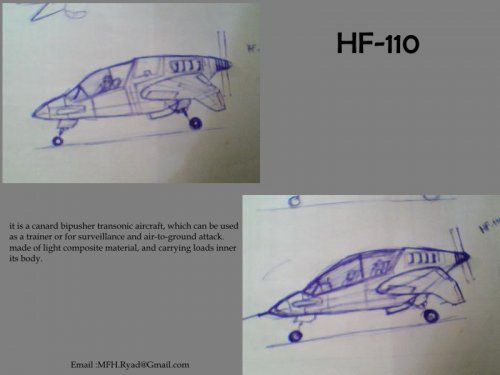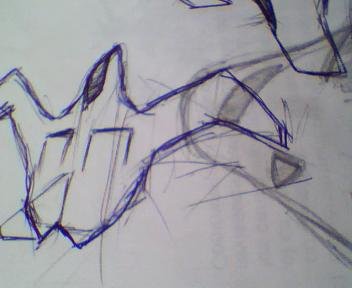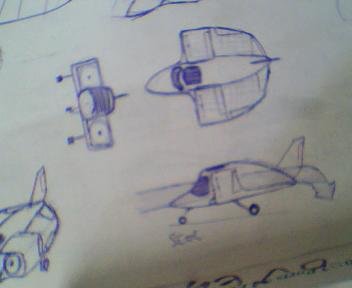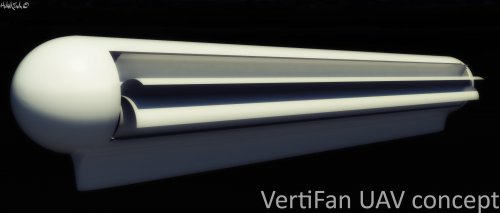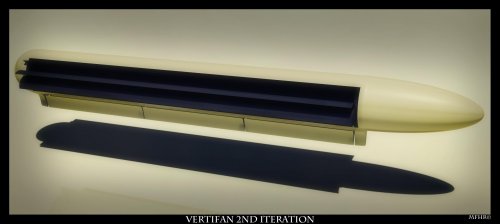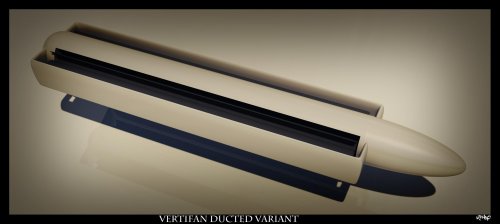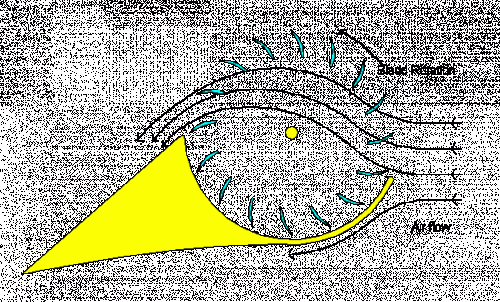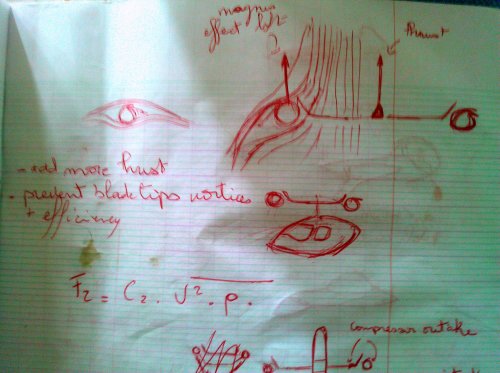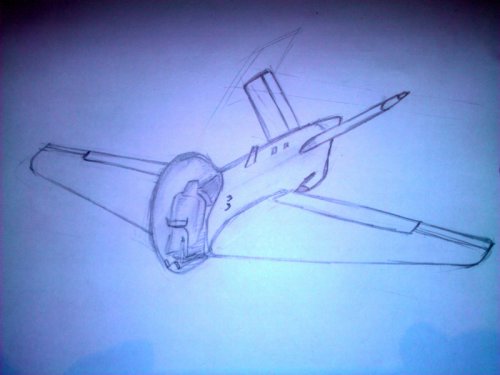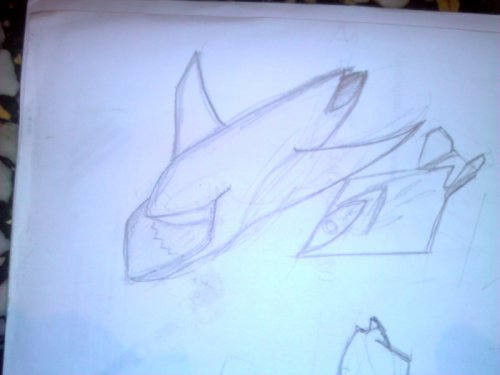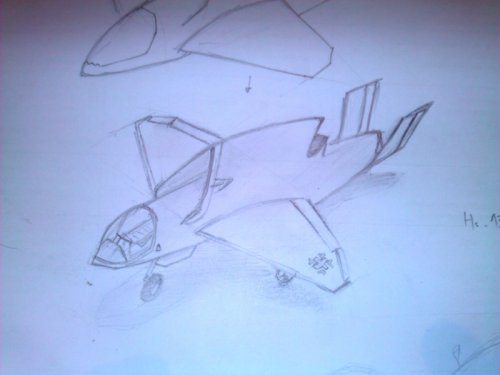You are using an out of date browser. It may not display this or other websites correctly.
You should upgrade or use an alternative browser.
You should upgrade or use an alternative browser.
My Sketches
- Thread starter lippischh
- Start date
- Joined
- 1 November 2009
- Messages
- 638
- Reaction score
- 429
I always enjoy seeing sketches and working drawings. Thanks for sharing.
lippischh
ACCESS: Secret
Hi thanks for the support, i'll publish more as soon as possible, but there is some that i wont publish because they're kind of inventions  .
.
lippischh
ACCESS: Secret
Hi, i haven't post here a long while ago, so here :














lippischh
ACCESS: Secret
Hello evryone,
presenting you a new type of aircraft of my invention it's called the Vertifan its theorically capable of VTOL, hovering and reaching high speeds thanks to its small frontal area, i've emailed a sketch of this concept to a specialist he said that it was intresting and i've to develop the idea further more.
here is a sketch of the concept and a render that illustrates it:

presenting you a new type of aircraft of my invention it's called the Vertifan its theorically capable of VTOL, hovering and reaching high speeds thanks to its small frontal area, i've emailed a sketch of this concept to a specialist he said that it was intresting and i've to develop the idea further more.
here is a sketch of the concept and a render that illustrates it:

Attachments
Exquisite and inspiring, Hamzalippischh.
It's rare to see hand-drawn sketches nowadays, unless they're vintage.
All your concepts appeal to me, from the tailless designs to the VTOL proposals (my favorite theme).
I urge you, encourage you, to move on with everyone of these designs, because IMHO, they're worthy of development.
Thanks for sharing.
Rafa
It's rare to see hand-drawn sketches nowadays, unless they're vintage.
All your concepts appeal to me, from the tailless designs to the VTOL proposals (my favorite theme).
I urge you, encourage you, to move on with everyone of these designs, because IMHO, they're worthy of development.
Thanks for sharing.
Rafa
lippischh
ACCESS: Secret
Dear Rafael,
i'm very surprised and pleased by your encouraging comment, i've a lot more of these sketches that i'll post here soon.
im very pleased that my works and concepts appeals to you.
thanks again A LOT for your comment.
Hamza
i'm very surprised and pleased by your encouraging comment, i've a lot more of these sketches that i'll post here soon.
im very pleased that my works and concepts appeals to you.
thanks again A LOT for your comment.
Hamza
lippischh
ACCESS: Secret
Here is some more, please feel free to C&C any of these ideas :







Cheers







Cheers
lippischh
ACCESS: Secret
hole in the ground
ACCESS: Secret
- Joined
- 6 August 2008
- Messages
- 235
- Reaction score
- 23
assuming that it works, it looks like it is taking up a lot of internal volume. Mount it in pods?
lippischh
ACCESS: Secret
yes i assume that it does take a lot of internal space, but the main purpose is a surveillance UAV and also getting into a new way to fly. now i dont reject the possibility to develop it into a manned version, in that case things will be surely different of course.
Dragon029
ACCESS: Top Secret
- Joined
- 17 March 2009
- Messages
- 881
- Reaction score
- 440
I wonder what kind of thrust you'd get if the fan blades could be twisted into an impeller, with the side of the pod closing, to create a sort of ducted fan / impeller for forward propulsion (to aid the existing main engine(s))?
lippischh
ACCESS: Secret
i've already thought about a duct to control the flow so that we get a certain amount of thrust in forward flight then not at all while hovering, im just too busy with some exams for the moment so the modeling work is interrupted till i finish with those.
but i'll definetly post other iterations and variants of the idea the soonest i can.
Regards
but i'll definetly post other iterations and variants of the idea the soonest i can.
Regards
lippischh
ACCESS: Secret
Kryptid
ACCESS: Secret
- Joined
- 12 March 2009
- Messages
- 282
- Reaction score
- 52
It might be capable of performing VTOL operations. However, if one were to rely solely on the impellors for lift during the whole operation, it seems like it would consume excessive fuel. I know helicopters rely on rotor thrust during forward flight as well, but the large rotor diameter makes the turboshafts very fuel efficient. I'm actually not sure how one would calculate the efficiency of impellors like in your design. I would suggest trying to figure out the internal layout in addition to the external layout. Figure out the sizes and placement of the cockpit, engines and fuel tanks. That may help determine if it has sufficient fuel fraction to perform a mission. If the aircraft is to have two engines, then I would also consider linking the two impellors together mechanically as in the V-22 Osprey. That would make the aircraft easier to control in the case of an engine out. I'm also wondering how it controls pitch and yaw.
I would also suggest making the design fairly pointy at the rear end in order to reduce form drag in forward flight. Smoothly blending the ducts into the sides of the aircraft would reduce drag as well. If you don't understand what I mean, maybe I could do a drawing.
If you are into the idea of detail design, I would strongly suggest looking into getting Dr. Daniel P. Raymer's book, Aircraft Design: A Conceptual Approach. It has helped me immensely in understanding the fundamentals and even the mathematics of aircraft design.
I would also suggest making the design fairly pointy at the rear end in order to reduce form drag in forward flight. Smoothly blending the ducts into the sides of the aircraft would reduce drag as well. If you don't understand what I mean, maybe I could do a drawing.
If you are into the idea of detail design, I would strongly suggest looking into getting Dr. Daniel P. Raymer's book, Aircraft Design: A Conceptual Approach. It has helped me immensely in understanding the fundamentals and even the mathematics of aircraft design.
lippischh
ACCESS: Secret
Kryptid, first thank you for your reply, i do understand all what are you saying and the model presented isn't the final shape i haven't take drag in consideration yet as the shape will change along the iterations, the latest render showed a ducted version that duct would allow more control on the airflow such as a vectorial thrust in order to achieve forward or backward thrust in addition to other flight controls, and yes wondering performances of such a system isn't obvious certainly because this is a new type of aircraft.
i think i have that book, now that you've remembered me of it i'll look into it, i'll try to get some progress and keep this topic updated.
Regards
i think i have that book, now that you've remembered me of it i'll look into it, i'll try to get some progress and keep this topic updated.
Regards
Why am I thinking FanWing? http://www.fanwing.co.uk
Caution: The FanWing concept has been patented!
Caution: The FanWing concept has been patented!
- Joined
- 11 March 2006
- Messages
- 8,625
- Reaction score
- 3,805
aemann said:Why am I thinking FanWing? http://www.fanwing.co.uk
Caution: The FanWing concept has been patented!
Was my first thought, too, but in the the fanwing concept, the rotor is part of the wing, working as a
an amplifier for the lift of a wing, with the axis of the rotor generally perpendicular to the flight path.
Here it seems to be just a radial compressor, so in a certain way similar to Michel Wibaults original idea
of the "Gyropter", I think.
lippischh
ACCESS: Secret
aemann as Jemiba said this concept is totally different from the Fanwing, indeed its inspired from it since that my idea came to me first when i tried to do an analogy of the relation between the fanwing and a VTOL aircraft with the relation between a propeller and an helicopter rotor but it turns out that the VertiFan uses a different way to accelerate the air vertically which is similar with a radial compressor.
jemiba i searched on the web about Michel Wibaults Gyropter and found this http://www.secretprojects.co.uk/forum/index.php/topic,2118.0/all.html, the Gyropter is similar to a Vtol jet fighter, well it uses a compressor too but i didn't find it similar for example with the VertiFan the air is taken from above and not from the front as a jet would do.
jemiba i searched on the web about Michel Wibaults Gyropter and found this http://www.secretprojects.co.uk/forum/index.php/topic,2118.0/all.html, the Gyropter is similar to a Vtol jet fighter, well it uses a compressor too but i didn't find it similar for example with the VertiFan the air is taken from above and not from the front as a jet would do.
- Joined
- 11 March 2006
- Messages
- 8,625
- Reaction score
- 3,805
What I meant was, that the fanwing doesn't produce lift by accelarating air downwards, as can be seen
in the picture from http://www.fanwing.com/pix.htm.
If the air, that is accelarated is taken from above or from the front of the aircraft, I think, isn't really
of importance, apart from the fact, that it should be available on a short way to minimise losses and
without the need to use long ducting.
in the picture from http://www.fanwing.com/pix.htm.
If the air, that is accelarated is taken from above or from the front of the aircraft, I think, isn't really
of importance, apart from the fact, that it should be available on a short way to minimise losses and
without the need to use long ducting.
Attachments
lippischh
ACCESS: Secret
Hey folks, wanted to present you the sketch below so you guys could tell me if such thing would be possible, it is mainly a rotor that is surrounded by what we could call a Magnus torus, to achive magnus effect a stream of compressed air is ejectd on its upper side which drives more air that is accelerated from the rotor, this would add more lift and remove tip vortices.
Attachments
lippischh
ACCESS: Secret
lippischh
ACCESS: Secret
So i thought up this a while ago and i honestly have doubt on it :
Well lets say a UAV is brang to a high Mach number speed by another aircraft this of course will generate friction hence heat, the uav internal parts are protected from this heat and it has a system of heat circulation which allows it to "put" it or concentrate it into a particular chamber, where air would experience a sudden temperature change hence a sudden dilatation backward which would generate thrust to sustain a flight at high enough speed to generate enough heat.
The system wouldnt maybe allow infinite range flight, or acceleration but the minimum would be that it would extend the range of an non-fuel carrying aircraft that could be considered as a supersonic glider.
Below attached a quick simple sketch of what could be its cross section.
Your opinions are very welcome.
Well lets say a UAV is brang to a high Mach number speed by another aircraft this of course will generate friction hence heat, the uav internal parts are protected from this heat and it has a system of heat circulation which allows it to "put" it or concentrate it into a particular chamber, where air would experience a sudden temperature change hence a sudden dilatation backward which would generate thrust to sustain a flight at high enough speed to generate enough heat.
The system wouldnt maybe allow infinite range flight, or acceleration but the minimum would be that it would extend the range of an non-fuel carrying aircraft that could be considered as a supersonic glider.
Below attached a quick simple sketch of what could be its cross section.
Your opinions are very welcome.
Attachments
Kryptid
ACCESS: Secret
- Joined
- 12 March 2009
- Messages
- 282
- Reaction score
- 52
I believe this aircraft would very quickly slow down if it carried no fuel to burn at all.
There is a concept known as stagnation temperature, which is the highest theoretical temperature that an aircraft can acquire due to aerodynamic heating. Let's say that your concept aircraft is carried to Mach 3 at 70,000 feet by some carrier aircraft (an XB-70, perhaps). The stagnation temperature at that condition will be around 500 degrees Fahrenheit (according to Fig. 14.19 in Dr. Raymer's design book). Even if you could transfer 100% of that heat from the leading edges of your conceptual aircraft to its quasi-combustion chamber (which you can't, due to the 2nd law of thermodynamics), you'd only be able to raise temperature of the air there by 500 degrees at most. In modern jet engines, you can expect the turbine inlet temperature to exceed 2,000 degrees. This will make the engine exceedingly weak, certainly producing much less thrust than the drag forces which act on it.
There is a concept known as stagnation temperature, which is the highest theoretical temperature that an aircraft can acquire due to aerodynamic heating. Let's say that your concept aircraft is carried to Mach 3 at 70,000 feet by some carrier aircraft (an XB-70, perhaps). The stagnation temperature at that condition will be around 500 degrees Fahrenheit (according to Fig. 14.19 in Dr. Raymer's design book). Even if you could transfer 100% of that heat from the leading edges of your conceptual aircraft to its quasi-combustion chamber (which you can't, due to the 2nd law of thermodynamics), you'd only be able to raise temperature of the air there by 500 degrees at most. In modern jet engines, you can expect the turbine inlet temperature to exceed 2,000 degrees. This will make the engine exceedingly weak, certainly producing much less thrust than the drag forces which act on it.
lippischh
ACCESS: Secret
Hi Kryptid, thanks a lot for your valuable reply.
Now according to what you previously said, there are two possibilities of use for this concept:
1-Using the system as an additional source of thrust in an usual jet engine.
2-Struggle with nature and design a very aerodynamic shape, and use of heat superconductor.
Altho the first one seems more reliable.
Now according to what you previously said, there are two possibilities of use for this concept:
1-Using the system as an additional source of thrust in an usual jet engine.
2-Struggle with nature and design a very aerodynamic shape, and use of heat superconductor.
Altho the first one seems more reliable.
Kryptid
ACCESS: Secret
- Joined
- 12 March 2009
- Messages
- 282
- Reaction score
- 52
In some sense, your first point has already been considered for hypersonic vehicles. The idea is to circulate fuel through the leading edges or other hot parts of the vehicle. That would both cool the structure and preheat the fuel before it enters the engine. As usual, the vast majority of the thrust would come from burning the fuel, however.
lippischh
ACCESS: Secret
Similar threads
-
-
-
-
-
An attempt at a sketch of the US IRBM prototype/demonstrator:
- Started by Chris707
- Replies: 0

